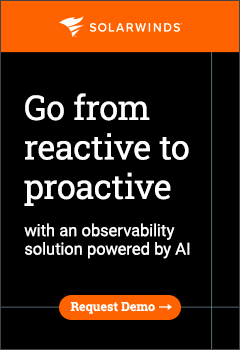 By Barley Laing, the UK Managing Director at Melissa
By Barley Laing, the UK Managing Director at Melissa
The pandemic, along with improving technology driving digitalisation, has seen the public sector place many of their services online.
Unfortunately, fraud has always been a big issue in the public sector – something that’s been exacerbated by services quickly going online during the health crisis. The Cabinet Office estimates that fraud and error costs the public purse up to £51.8 billion every year, with the Bounce Back Loan Scheme set up during the pandemic alone expected to cost the taxpayer £27 billion in fraud or credit losses. This high level of fraud requires public bodies to know who they are engaging with. It’s confirmation of identity that will prevent valuable budgets from being disbursed incorrectly, money that can be more appropriately targeted at frontline services.
At the same time, people are used to engaging with businesses which provide fast and secure access to services online, particularly during the pandemic. Therefore, when they register online for a service offered by the public sector they expect it to be quick and seamless.
This poses the question: How can public bodies ensure accurate and fast identity verification – ideally in real time – at the point of access?
Biometric technology = accurate and fast remote identity verification
The public sector needs to take an effective remote and automated approach to identity verification, to ensure those who are entitled to access services can, while those who aren’t, can’t.
A good place to start is to use biometric technology to verify identity remotely. It’s the way forward for those serious about delivering a standout and effective ID verification process in the digital age. Biometric technology enables organisations to digitally identify someone using their physical human characteristics, such as fingerprints, facial features, and voice; or behavioural characteristics, such as how they interact with a touchscreen. These are all unique identifiers that cannot be replicated, avoiding the need for time-consuming security questions or the frustration of forgotten passwords.
Biometrics enables people to quickly and easily access their services or account, helping to deliver a positive experience. It’s this technology that’s already proving popular in seamlessly confirming the ID of prospective customers in other heavily regulated industries, such as banking. It is now attracting the attention of the public sector.
Biometrics that uses facial verification technology is the standout tool for those in the public sector. With this form of biometrics, once the applicant to a service or product has scanned and provided their primary ID document (such as a passport or driver’s licence with a photo), via a device of their choice, Machine Readable Zone (MRZ) and Optical Character Recognition (OCR) technology can check its validity in real time. The applicant then simply takes a selfie, which the software scrutinises via an algorithm within the technology, comparing it with the master ID image. The algorithm can instantly distinguish differences between the selfie and the ID image, including head position, hairstyle, skin imperfections, facial hair, makeup and age.
Liveness checks are key
However, when sourcing facial verification technology it’s vital that those in the public sector select one that offers liveness checks, and requests a ‘challenge response’. By asking the individual to blink, which confirms eye movement and proof of life, it’s possible to establish that the person is real and not a static image. It provides additional confidence that the person being onboarded online is very definitely who they say they are. This is important at a time when there’s been an increase in ‘spoofing’ which involves criminals using creative methods like 2D images and video playback to try to trick facial recognition technology and ‘prove’ they are the person they are impersonating.
Good facial verification biometric software enhances the customer journey by ensuring that the lighting, sharpness, and quality of the images of the ‘live’ selfie and the ID document are sufficient to pass through the process quickly and efficiently. Additionally, using such software enables ID checks to be performed in just a few minutes, rather than waiting for a lengthy manual, and more costly, ‘back office’ check.
Biometric technology preferable to manual checks
Using automated biometric technology to remotely verify identity is significantly better than the physical, time consuming, and more costly checks that traditionally take place behind the scenes at public bodies, for a number of reasons. Firstly, staff are asked to check documents for authenticity, manually, despite not always having specific training in identifying forged or fraudulent documents. With thousands of ID document types worldwide employees can’t be expected to know them all, which can cause review-related delays. Also, everyone is vulnerable to human error, making manual reviews less effective or stringent than they should be. Finally, operating manually does not usually allow for a quick response to changes, whether legislative or regulatory. In light of this public bodies should ask if there is any justification for continuing spending money on manual ID checks with budgets under extreme pressure, when speed and accuracy are offered via automated remote ID verification services, such as biometrics?
Remote onboarding is becoming more important for those in the public sector in 2022 and beyond, as services increasingly go online. It’s time public bodies look to embrace the benefits automated remote identity verification can bring, particularly using biometric technology that powers facial verification.
For more information about Melissa and how our ID and document verification services can help you prevent fraud please visit: Melissa, email: barley.laing@melissa.com or call: 020 7718 0070.
Barley will present a seminar on: ‘How to verify identity remotely’ at the Counter Fraud in Public Sector Conference at the QEII Centre in London on 23rd February 2022.






Recent Comments